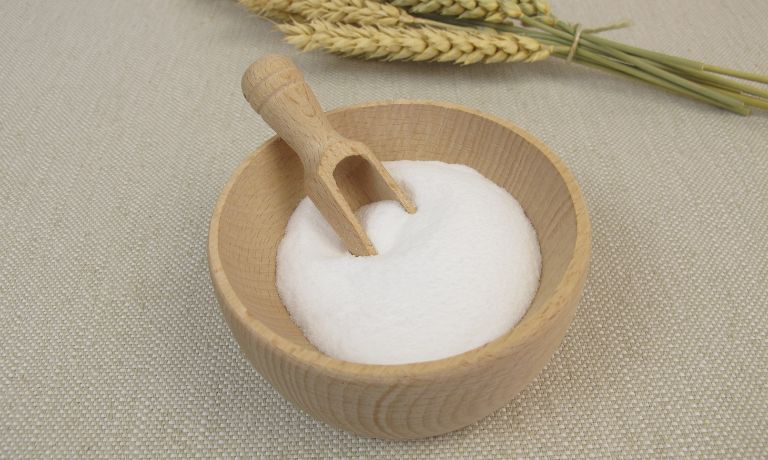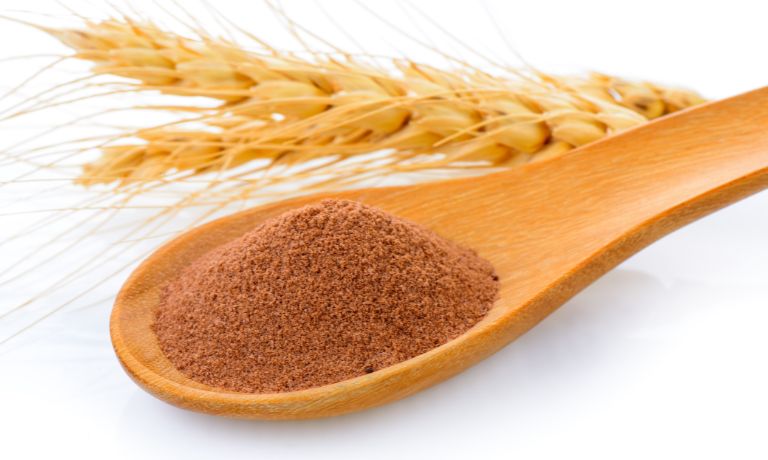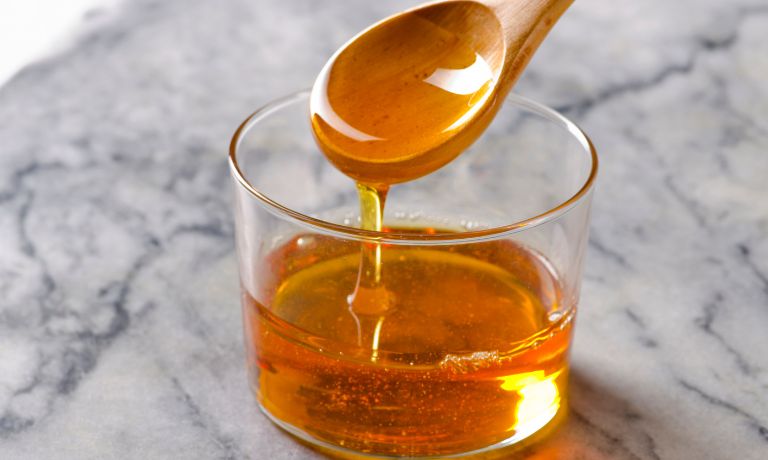Are you looking for a substitute for dextrose for your next baking project?
Fortunately, a range of options are available that offer great taste and texture as well as various health benefits.
We’ll explore several substitutions and their pros and cons to help make it easier to determine which one might be the ideal fit for your next recipe!
What Is Dextrose?
Dextrose is a form of glucose, and it is an odorless, colorless sugar. It tastes sweet and can be used as a sweetening agent in many foods.
Dextrose is commonly used in baking and cooking for its sweetness and because it helps foods maintain their texture.
It’s also often used to add sweetness to processed foods, such as cereals and snacks.
Dextrose is also sometimes used in pharmaceutical products to help bind ingredients together and provide bulk.
As a sweetener, dextrose has fewer calories than sugar, and some people prefer it because it’s not as intensely sweet as table sugar.
Dextrose is also popular among athletes for providing a quick burst of energy.
It is also found in many everyday foods, such as soft drinks, candies and processed cereals.
Dextrose is sometimes added to canned goods and frozen meals to enhance their flavor.
Overall, dextrose is a versatile sugar that adds sweetness and texture to many different types of food.

Substitutes For Dextrose
Here are several options to substitute for dextrose:
Malt Extract
Malt Extract is a sweet, syrup-like substance made from sprouted cereal grains that are then dried and milled into a powder.
It is used in baking to add sweetness and improve the texture of baked goods.
Malt extract has an even sweeter taste than dextrose and requires no additional sugar or sweeteners.
Additionally, malt extract is a natural source of vitamins, minerals, and other beneficial compounds that may reduce the risk of heart disease, diabetes, and cancer.
Malt extract also contributes to improved digestion due to its high fiber content.
Finally, Malt Extract adds a unique flavor to baked goods that many prefer over other sweeteners.

Liquid Glucose
Liquid Glucose, also known as glucose syrup or corn syrup, is a thick sweetener that comes from the starch of wheat, potatoes and rice.
It is widely used in confectionery, baking and other food products as an alternative to cane sugar or dextrose.
Liquid glucose has some advantages over dextrose in terms of cooking or baking.
It has a higher viscosity than dextrose, meaning it helps to hold moisture in cakes and other baked goods for longer.
This keeps bread and cakes from becoming too dry after they are cooked.
Additionally, liquid glucose helps to retain the shape of food products when frozen, making it ideal for ice creams and sorbets.
Liquid glucose also adds a glossy sheen to food products, making it ideal for candy and chocolate production.
Finally, liquid glucose is less sweet than dextrose, allowing you to use less sugar or other sweeteners when baking or cooking.

Honey
Honey is a natural sweetener used for centuries as an alternative to sugar and other artificial sweeteners.
It comprises two simple sugars, glucose and fructose, which give it its characteristic sweetness.
The primary component of honey is nectar, which bees collect from flowers.
Its popularity as a sugar substitute in cooking is due to its higher fructose content than other natural sweeteners.
It’s more concentrated and slightly sweeter than sugar. It also has a rich flavor that adds depth and complexity to various dishes.
Additionally, honey should be heated gently as it can burn easily if not handled correctly.
Honey is also an excellent source of antioxidants and other beneficial minerals which can help promote overall health.

Agave Nectar
Agave nectar is a sweetener made from the agave plant native to Mexico.
It has a light honey-like taste and its sweetness level is generally higher than that of refined sugar.
You only need to use a small amount of agave nectar in place of regular sugar.
Additionally, it contains fewer calories per serving compared to other sweeteners.
Agave nectar can be used in various recipes, from baked goods and desserts to marinades and sauces.
When using agave nectar as a substitution for dextrose, it may require some experimentation to find the right amount for your recipe.
Additionally, agave nectar has a slightly different flavor than regular sugar, so you may need to adjust other ingredients accordingly.

Lactose
Lactose is a type of sugar. It’s found in milk and other dairy products, like cheese and yogurt.
Because lactose is naturally sweet, it can be used as a substitute for dextrose in some recipes.
Lactose is not as sweet as dextrose, so if using this sweetener, you may need to use more of it than you would with dextrose.
Lactose can provide a creamy flavor and sweetness, making it an ideal sweetener for baked goods and desserts.
Unlike other sugars, lactose is not easily absorbed by the digestive system.

Maltose
Maltose, or malt sugar, is a disaccharide of two glucose molecules.
It is found naturally in sprouted grains and certain vegetables, like potatoes and sweet corn.
Maltose has an approximate sweetness of about 30-50% lower than dextrose.
Additionally, maltose has a more complex flavor than dextrose, providing an interesting recipe twist.
It is commonly used in baking, brewing beer, and making candies and other confections.
In addition to its use as a sweetener, maltose can also help increase shelf-life and improve the texture and structure of some baked goods.
When used as a sugar substitute, maltose can add a unique flavor to recipes similar to butterscotch or molasses.
Fermento
Fermento is a unique type of natural sugar that can be used as an alternative to dextrose in cooking.
It’s made from the fermentation of cornstarch and has a light sweetness without any additional flavors or artificial sweeteners.
It can be used as a substitute for dextrose in baking, boiling, and steaming dishes.
Fermento is a healthier option, as it contains fewer calories and no artificial sweeteners than dextrose.
It can also add interesting flavor notes, making recipes more unique and enjoyable.
Additionally, using fermento in baking helps extend the shelf life of baked goods since it doesn’t break down as quickly as dextrose.
Finally, fermento can add a unique texture and flavor to recipes without making them overly sweet or artificial tasting.
FAQs
Which Sugar Is Most Similar To Dextrose?
Dextrose is a monosaccharide or single-unit sugar, and the most similar to it is glucose.
Glucose is a monosaccharide with the same chemical formula (C6H12O6) as dextrose and can be interchanged in almost any recipe.
Can I Use Glucose Instead Of Dextrose?
Yes, you can use glucose instead of dextrose.
Glucose is a simple sugar that your body breaks down easily and is considered the same as dextrose.
However, this depends on your glucose type; some may not have the same nutritional benefits as dextrose.
Is Dextrose Equivalent To Sugar?
Yes, dextrose and sugar are carbohydrates that provide similar energy.
Dextrose is a form of glucose, the simplest sugar molecule form.
It has the same sweetness as regular table sugar and can be used interchangeably in recipes.
Conclusion
These are just some alternative sweeteners that can substitute for dextrose in cooking.
Each has unique properties and advantages, so you’ll want to experiment to find the best fit for your recipe.
Remember, when substituting natural sweeteners for dextrose, you may need to adjust the amount used in a recipe and other ingredients accordingly.
By using natural sweeteners, you can reduce added sugars in your food while still enjoying all the delicious sweetness!

